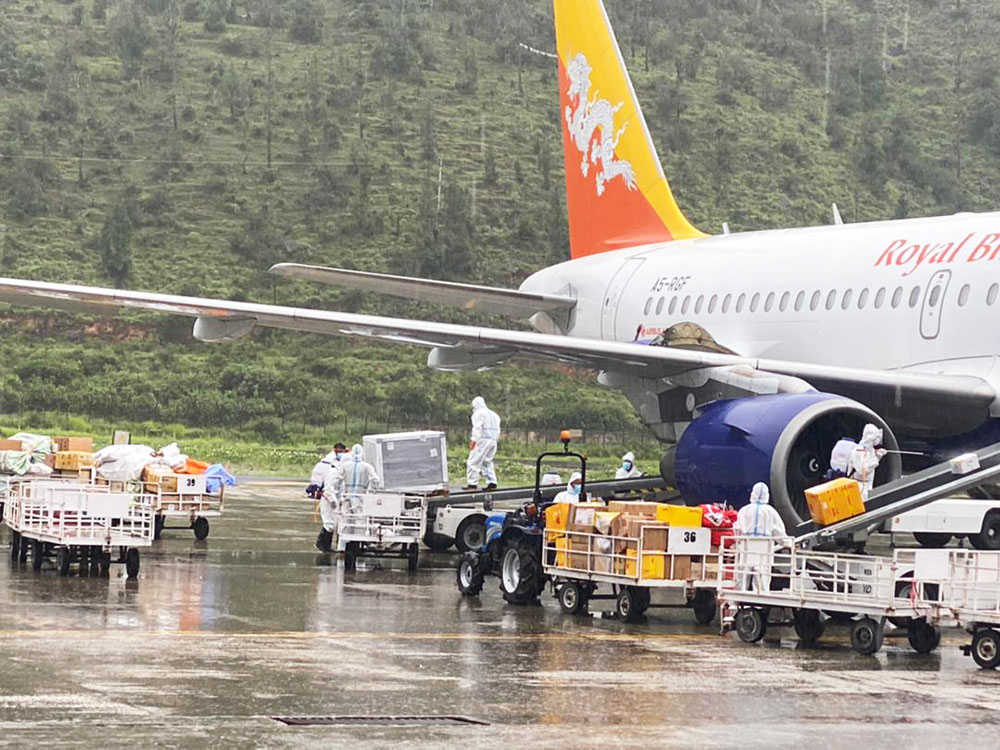Phub Dem
Recognising Paro International Airport’s commitment to prioritise health and safety measures, the Airports Council International (ACI) awarded a certificate of accreditation on July 8 this year.
The accreditation was awarded based on International Civil Aviation Organisation (ICAO) restart task force recommendations and in line with the ACI aviation business restart and recovery guidelines.
According to the director-general of the Department of Air Transport (DoAT), Karma Wangchuk, the accreditation award is based on evidence that the airport is following best practices and has implemented key measures to prevent the further spread of Covid-19.
He said that the process allowed airports to validate measures and reassure travellers and passengers using the airport’s facilities.
Council Aviation Recovery taskforce guidance includes airport terminal building, cleaning, disinfecting, physical distancing, staff protection, check-in areas, security screening, airside areas, gate installations, passenger transfer, disembarking, baggage claim and arrivals areas.
It also covers areas under the jurisdiction or responsibility of others, such as local health authorities, aviation regulators, or airline operators.
The accreditation is valid for a year, where airports are expected to complete ongoing self-assessment and quality assurance, leading to a cycle of continuous improvement as situations change and requirements evolve.
Karma Wangchuk said that the accreditation was possible with policy guidance from the Ministry of Information and Communication, Bhutan Civil Aviation Authority and collective effort from the front-liners working at the airport.
As a part of the accreditation process, the Paro International Airport Covid-19 task force identified an inspection team that regularly monitors the implementation of protocols, standard operating procedures and correct the lapses.
Considering the evolving risk of the virus, all airline crews, baggage handlers and disinfection teams operate from containment centres with personal protective equipment. The waste from the aircraft and apron area is disposed of at the designated waste dump area.
As per the ACI world guidance principles, incoming passengers are directly taken to the quarantine centre from the apron, discontinuing the airport’s testing beginning April this year.
Senior health assistant, Karma Norbu, said that airport staff in contact with the passengers, such as airport crew, loaders and disinfection team were placed in the containment centre.
He said that the manual health declaration form was discontinued temporarily and passengers are directly taken to the quarantine facility from the airport without any contact with health officials at the airport. “All the detailed information including the health status of quarantine individuals are maintained in the health facility system.”
Senior immigration officer, Tshering Doma, said that immigration clearances were conducted online on arrival. “Issuance of visa, entry permit and other procedures are carried out after the completion of 21-day quarantine.”
Moving forward, Karma Wangchuk said that DoAT took advantage of less traffic in developing infrastructure, enhancing the safety and security of the airport. “Runway resurfacing is underway, which is expected to be completed by September.”
He said that the airport implemented all 20 recommendations suggested by the ICAO Council Aviation Restart task force.
He said that the measures would be regularly evaluated and updated in line with the risk of transmission and the development of other diagnostic or preventive measures, including technological measures.
As per the new guidance for airport industry restart and recovery, the focus is to protect the health and welfare of travellers, staff, and the public from minimising the risk while maintaining efficient operations.
It provides the best examples and guidance for airports as they prepare to restart operations to sustain a business recovery amid the pandemic.
Edited by Tashi Dema


